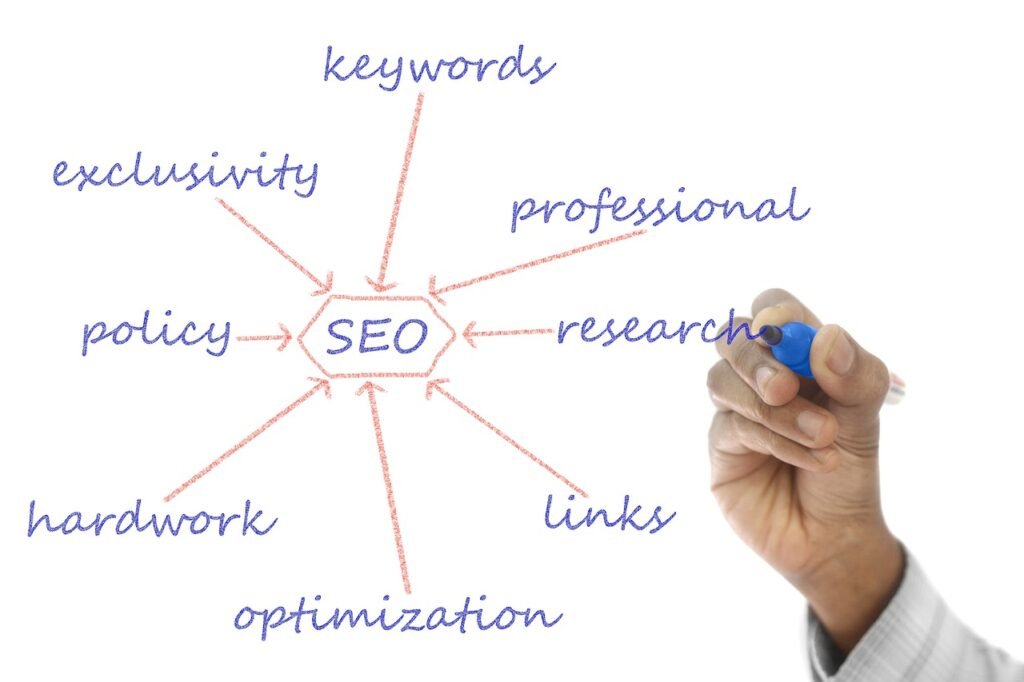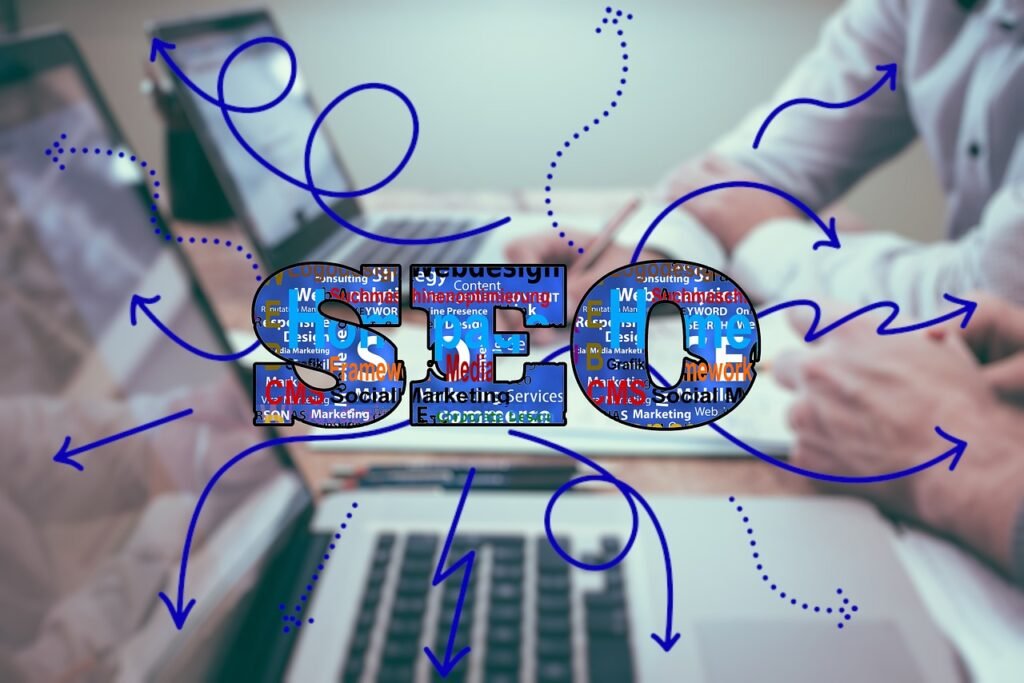SEO and SEM are two of the most potent tools for digital marketing. Both are concerned with traffic and visibility through Google and other search engines and are standardized basic definitions confused or commonly interchangeably used. The purpose is the same, but there are major differences, and understanding those differences will help marketers distinguish between the two that they can channel both for the work ability.

Both SEO and SEM have similar purposes: to make a website visible in the search engine’s results but differ in execution. If SEO mainly focuses on the optimization of a website to draw organic traffic, SEM encapsulates much more: it includes organic efforts like SEO and things like PPC campaigns and display ads through Pay-Per-Click. Simply put, SEO is, therefore, just a small fragment of SEM as concerns organic strategies.
The gist of it all boils down to the methods used. SEO involves methods that focus on improving a website’s natural ranking through techniques of optimization like content creation, technical changes, and building external links. SEM, on the other hand, pays for a faster means of visibility with ads to relevant traffic through PPC, display ads, and social media ads.
SEO is primarily focused on artificially improving the visibility of a site in the pages that search engines cast to. Rank Factors consider how search engines such as Google “crawl” and “index” websites to determine perceived relevance and authority on the relevant topic. Within these rank factors we could put keywords, backlinks, and content quality. SEO is the integration of a more viable site to maximize relevance and authority in the search engines.
SEO can be broken down into four broad categories, which would include:
Technical SEO: This involves rectifying technical areas of the website such as fixing broken links, site architecture, and other aspects like metadata.
On-page SEO- This would deal with relevant content optimization on the site page, correct usage of relevant keywords, page titles, and URLs, and internal linking.
Off-page SEO: Create external signals to build links for enhancing website authority and credence.
Local SEO: Targeting any search query that is local and optimizing for searches based on locations; this is critical for small businesses.
Essential Features of SEO
Over two hundred factors are used by Google for deciding positions for a site in the search engine. Some of the most important factors are:
Keyword Optimization: This means researching and allocating keywords across your website, which customers actually search for.
Content Creation: High-quality content that addresses the user’s needs, provides value, and contains optimized keywords.
User Experience (UX) : Your website loads quickly, has smooth navigation, and presents valuable, relevant content to keep visitors engaged.
Link Building: These are the cheap and effective methods of acquiring high-quality back links from reputable sites to convince the search engine that a certain site is worthy or authoritative.
Mobile Optimization: Ensure the site is mobile friendly as a huge chunk of searches today come from mobile devices.
SEO is a universe by itself and should be treated in an integrated manner concerning optimization-related activities. Here are some of the best practices:
Quality Content: Content is the blood of SEO. Content should not just be focused on the related keywords but also serve to answer the questions being asked by the audience.
Optimize for User Intent: Think on behalf of the audience. What are they really searching for, and how can their needs be served by your content?
Internal Linking: Provide links to related pages and content in order to carry the user through your website and to aid navigation.
A Mobile and Voice Search Friendly Approach: With mobile devices and voice assistants, users now have greater access to search. Thus, make sure that content is optimized for all its utilities.
How SEM Is Working?
SEM itself is popularly associated with the paid search marketing arm, including paid methods such as PPC campaigns in which advertisers bid on keywords so that their ads would show as sponsored results to search queries. The fact is that SEM offers quick visibility, unlike SEO, which could take some time; however, it also offers various levels or targeting.
Examples of SEM include:
PPC advertising: Paid search campaigns that target certain keywords, such as Google Ads and Bing Ads.
Display advertising: These include display ads, retargeting campaigns, and video ads (ex: YouTube ads).
Social Media Ads: Paid campaigns on Facebook, Instagram, and LinkedIn.
Key Features of SEM
This is the best point in SEM that it provides flexibility and targeted approach. Some specific characteristics of SEM include:
Keyword Targeting: You select and bid on the right keywords so the ads reach your target audience.
Bidding and Budget Control: On an SEM campaign, you get to set budgets, and bid for keywords depending on your goals and objectives.
Ad Creation and Optimization: Write attractive copy for your ads to influence users and move them to act.
Audience Targeting: Ads can be customized to a very precise audience via demographics, interests, or locations.
You must follow the following best practices to ensure better performance of your SEM campaigns.
Keyword Refinement: Continue brandishing keyword research to target keywords in your audience’s alignment.
Ad Copy Optimization: Write good and effective ad copies by underscoring the USP of your product or service.
Landing Page Optimization: Ensure that landing pages are in line with ad message content, quick loading, and have a good user experience.
Conversion Tracking: Gauge success by evaluating clicks, conversion rates, and return on investment against campaign performance.
Integration of SEO with SEM for Maximum Advantage
While SEO and SEM perform their jobs just fine as separate entities, the idea of combining them provides a powerful weapon against the methods employed by search engines for the visibility of a website. Capturing an audience with SEM for the short term, landing targeted leads at specific markets, and growing organically for a long time through SEO has a wider viewing angle and better conversion rates.
For instance, data collected from your SEM campaigns can help inform your strategy for SEO keywords, while your SEO initiatives can improve the quality of your landing pages created for SEM campaigns.
The Future of SEO and SEM
Search marketing has kept evolving over the time and the future lies with artificial intelligence (AI) and machine learning with regard to SEO as well as SEM. AI enabled tools like Google’s AI Overviews (SGE) will force any search engine to structurally understand the user well, hence increasing the relevance of creating high-quality searcher-determined content.
Moreover, with the advent of voice search and video content coupled with new-age platforms such as TikTok, which is evolving into a search engine for the younger populace, the marketer must think beyond memorable and catchy phrases when it comes to search marketing.
SEO and SEM are the two important routers through which traffic flows into the website as well as the people get visibility. Understanding the strengths between these two strategies and the differences therein allows online players to beat optimum competition and create stronger online presences.
